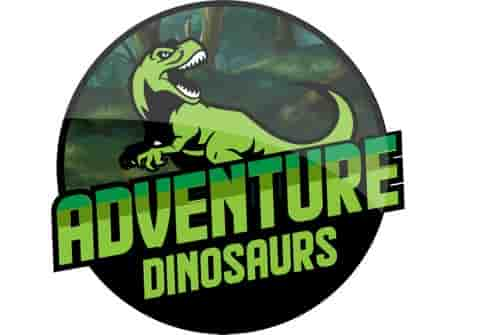Key Takeaways
- South America was a significant dinosaur habitat during the Mesozoic Period, hosting hundreds of species.
- The continent was initially part of the supercontinent Pangea before it drifted away from Africa.
- In Mesozoic times, South America’s climate ranged from dry, hot landscapes to wet, swampy areas.
- The Jurassic period saw South America as a warm, humid archipelago with an inland sea.
- Tectonic activity and continental drift during the Cretaceous period caused climate changes and mass extinctions.
- Fossil findings reveal diverse dinosaur species across South America, offering insight into prehistoric habitats and climates.
South America, a continent where some of the largest dinosaur fossils have been found, was once a part of a large landmass that included Africa during the end of the Paleozoic Era. Over the millions of years in the Mesozoic Era, the climate, habitat, and environments changed from a dry and barren landscape into forested and tropical landscapes similar to what we see today. It makes me wonder where dinosaurs lived in South America and the different dinosaur habitats during the various periods of the Mesozoic Era?
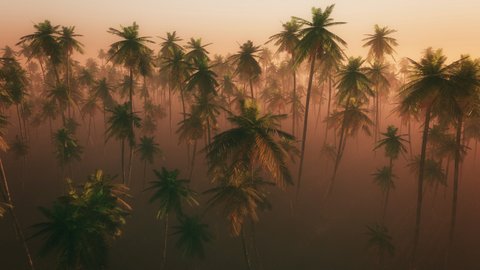
Dinosaur Habitats South America – What Was It Like?
So, what were the dinosaur habitats of South America? In Jurassic South America, the climate was dry, which led to habitats that consisted of mountains, coniferous forests, swamps, and riversides. During the Cretaceous, the South American climate became humid and even tropical, with forests developing into mixed and riparian forests.
South America was a major dinosaur habitat throughout the Mesozoic Period, encompassing the Jurassic and Cretaceous Periods. Hundreds of dinosaur species lived in the millions of years that encompassed the Mesozoic, including those species adaptable to mountainous regions, hot temperatures, and rising sea levels. As Pangea, the supercontinent, which began to separate slowly then fully broke apart, the continents of Africa and South America split.
The seas rose during this period, which also increased lakesides, riversides, and swamps. Famous dinosaurs that stomped around in these habitats of South America were Amargosaurus, Giganotosaurus, and Patagotitan.
Ahead, I’ll lay out the main South American dinosaur habitats and how paleogeologists think they changed throughout the Mesozoic era. As most of the dinosaur fossils represent the Jurassic and Cretaceous periods, I’ll focus on these two periods. I’ll also cover the various dinosaurs that were adept at thriving in these South American habitats until their extinction at the end of the Mesozoic. It’s a fascinating and fun glimpse into prehistoric times, so make sure you keep reading!
Table of Contents
South American Habitats During The Mesozoic Era
The Mesozoic Era also referred to as the Middle Life Period, started some 252 million years ago and ended roughly 66 million years back. This period is quite noteworthy because, at the start of the Triassic period, Africa and South America are believed to have been joined together as one large landmass. Later in the Jurassic and Cretaceous periods, the landmass drifted into today’s representative continents.
To describe the habitats of South America, we first need to cover how the continent of current-day South America was during the Mesozoic periods. From there, I’ll describe the key dinosaur habitats of South America.
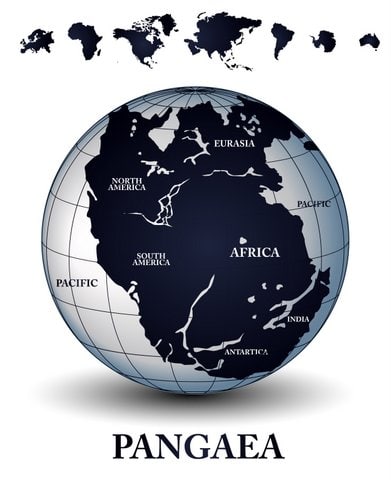
Supercontinents and Continental Drift – South America in the Mesozoic Era
South America is an amazing continent. It has varied landscapes and vast diversity of life. But it wasn’t always a part of the Americas as we know them now because South America used to be connected with Africa and Antarctica. For that, we need to look further into paleogeography to understand it better.
The supercontinent Pangea is one that existed before the Mesozoic Era and joined together all the major continents. It started to split apart 225 million years ago at the beginning of the Triassic. South America is thought to be part of the lower-half supercontinent Gondwana, including present-day Africa, South America, and Antarctica.
The continental drift of South America occurred throughout millions of years as the continent slowly drifted away from Africa and connected with North America. This process began in the Jurassic period, when tectonic plates shifted, forcing the landmasses to separate.
By the time it entered the Cretaceous period some 100 million years ago, the continents had drifted apart, and it divided Africa and South America. It is surprising that, given their early proximity, some dinosaur fossils found in these two now-separate continents are quite similar.
Interestingly, dinosaurs who lived on the land in half of the landmass had a different environment than those on the other half. I’ll talk about this more in the next section.
In terms of climate, by the Jurassic Period, the world was a dry and hot place with many landmasses and developing bodies of water. The seas rose in the Late Cretaceous Period, leading to wetter conditions yet, still-hot temperatures that resembled sub-tropical and tropical climates.
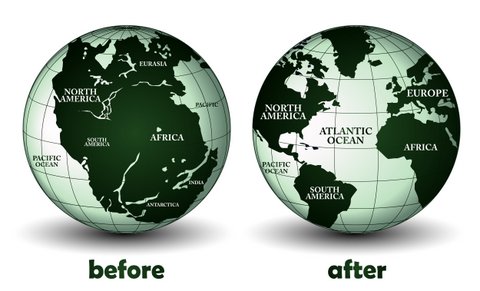
Dry and Rugged Landscapes
Let’s get into the habitats now.
Dry and rugged landscapes can be listed as:
● Desert plains
● Mountains
● Shrublands
Desert Plains
A desert plain is a large, dry expanse of land. Because of the arid conditions, it has sparse vegetation consisting mainly of succulents and drought-resistant shrubs.
These arid regions have no rainfall throughout the year, with seasonal rainfall usually only reaching a few inches per year. However, some plants can survive these harsh circumstances due to their adaptation to living in places where water is scarce. Therefore, they are better connected to groundwater supplies or derive their nutrients from decaying organic matter instead of direct precipitation.
Shrublands
In South America, shrublands are often found in the Andes. These areas are widely known for their biodiversity and abundant wildlife.
In South America, shrublands are like those found in the Andes. Shrublands are areas dominated by woody shrubs. They can be found in a range of climatic conditions, from cold and dry to hot and wet.
Mountains
Mountainous habitats included conifer forests and mixed forests throughout the Jurassic and Cretaceous periods and different bodies of water like lakes, swamps, and rivers. These habitats created ecosystems that dinosaurs could thrive in, giving a good mix of carnivorous and herbivorous dinosaurs. It provided ample vegetation for food as well as for hiding from predators.
The Forests
The different types of forest habitats in South America during the Mesozoic are:
● Riparian forests
● Coniferous forests
● Mixed forests – including the cycads and palm trees
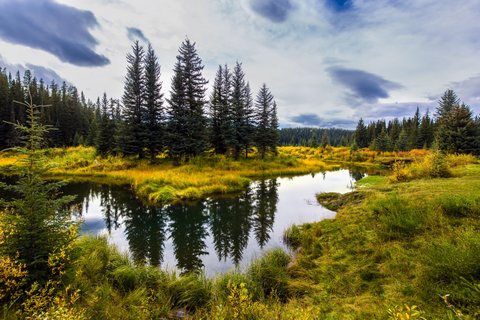
Riparian Forests
Riparian forests are found along rivers and streams and are a transition zone between an arid landscape and an aquatic environment. Riparian forests are connected by riparian woodland or riparian scrub.
Riparian forests are found near bodies of water. They tend to have warmer temperatures than other types of forests, so they often grow especially tall trees to reach the canopy’s sunlight.
Coniferous Forests
The Mesozoic Era is sometimes called the Age of Conifers, suggesting that areas like South America and other Mesozoic landscapes would have been rife with conifer trees. As we discussed in a recent post, conifers were favorites of the herbivorous sauropods and armored dinosaurs.
Another trademark of the Mesozoic Era is the prominence of rocks, including sedimentary rocks and mountainous terrain. The seas would come in at times during this era, but they always receded. That wouldn’t be the case forever, but it was for several million years.
Argentina, in particular, has petrified forests of conifers. One such place is Jaramillo’s petrified forest, located in Patagonia. It has remains of an ancient conifer forest dating back to the Jurassic period. (Source)
Mixed Forests – Cycads and Palm Trees
Mixed forests are a combination of different trees living during the appropriate periods. In the Jurassic, the different trees were conifers and cycads (an early palm tree), and gingkos. Later in the Cretaceous period, we start to see flowering trees mixed in with the conifers and cycads, and palm trees to create tropical regions.
Land With Water
The types of habitats which included land with water environments are:
● Riversides
● Swamps
● Coastal and islands
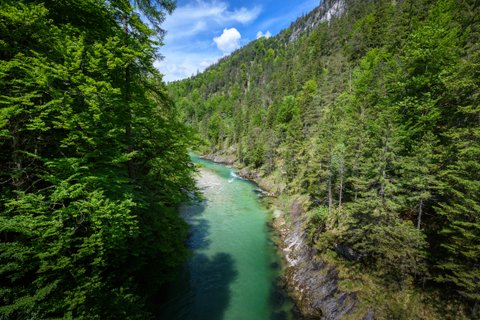
Riversides
A river is a natural watercourse, usually freshwater, flowing towards an ocean, a lake, a sea, or another river. In a few cases, rivers flow into the ground and become dry valleys. It’s possible these dry valleys existed during the Jurassic as the climate was much dryer and arid at that period.
A riverbank is a place along the side of a river. It can be wooded, rocky, or sandy, depending on its location and surrounding landscape.
Swamps
A swamp is a wetland formed when an area becomes flooded and the water does not drain. What grows in and around swamps varies, but vegetation during the Jurassic was likely a mix of conifers and cycads. During the Cretaceous, a mix of grasses, flowering trees, and conifers.
Coastal and Island
In coastal areas, the landscape during the Jurassic was likely sparse forests, and some of these areas are flat with low rolling hills that are sometimes covered in scrub trees. Farther inland from the coasts, habitats can be very marshy and swampy because it is near water. The subtropical climate likely enhanced the coastal area habitats with more vegetation like grasses and palm trees in the Cretaceous. (Source)
If you are interested in reading more about dinosaur habitats, check out my article What Are the Different Dinosaur Habitats? 9 Places Where They Lived which goes over each habitat in more detail.
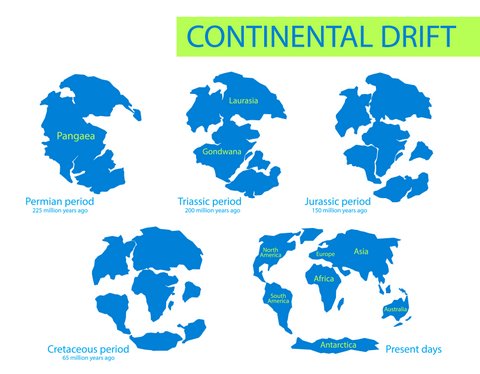
South American Landscapes in Different Periods – Jurassic and Cretaceous
In the Jurassic period, South America was an archipelago on the northern edge of the supercontinent Pangaea. The climate at this time was warm and humid, with a giant inland sea covering much of present-day Brazil. Tropical forests grew throughout what is now central and southern Brazil, Paraguay, Uruguay, and Argentina.
The South American continent experienced a great amount of tectonic activity during the Cretaceous period. Coupled with the fact that it was closer to the poles than today, it caused its climate to be much warmer and wetter than what we see in modern times.
During the Cretaceous Period (145–66 million years ago), South America was connected by a land bridge with North America. It allowed dinosaurs to migrate freely across both continents during that period.
————————————————————————————————
Related Dinosaur Articles You Might Also Be Interested In:
Herbivore Dinosaurs – What’s So Cool About Them? (Types, Sizes, Facts)
Types of Duck Billed Dinosaurs -Names, Habitats, Nests
What Are Long Neck Dinosaurs (Types, Size, List)?
————————————————————————————————
Jurassic South America And Its Habitats
The Jurassic Period began after the Triassic Period and lasted 56 million years in all. This period was smack-dab in the middle of the Mesozoic Era in a time called the Age of Reptiles.
Pangea, which had started to separate at the beginning of the Mesozoic Era, was now completely split. Gondwana, the southern half of Pangea, moved east. The western part of Gondwana is South America and Africa as we now know them today. The eastern part of Gondwana became today’s Australia, India, Madagascar, and Antarctica.
The northern part of Pangea, called Laurentia, was mostly landmasses. Today, those masses are recognized as Eurasia and North America. As Laurentia separated from Gondwana, basins developed that would later become the Gulf of Mexico and the central Atlantic.
The habitats during the Jurassic were hot, and these habitats existed and had harsh climates:
● Desert plains – arid deserts
● Mountains – rocky and mountainous landscapes with conifer forests
● Shrublands – sparsely populated cycads and conifers (few types of grass existed during the Jurassic)
● Riparian forests – arid deserts and mountains leading to these forests
● Coniferous forests – covered many areas
● Mixed forests – covered many areas but sparsely populated as the climate was dry
● Riversides – rivers flowing through dry mountains and deserts areas
● Swamps – existed, but vegetation sparse
● Coastal and islands – sparse vegetation and conifer and cycad forests
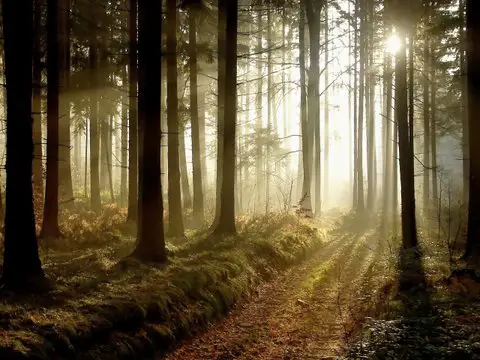
Cretaceous South America And Its Habitats
The Cretaceous period was a time of change for South America. As the Atlantic Ocean widened, South America moved away from Africa and closer to North America. This movement caused dramatic changes in climate and environment that led to several mass extinctions on both continents.
The sea levels had risen further than before, forming shallow areas of inland seas. Dinosaurs were more prominent on the land than on the seas. Flowering plants were common, and birds and mammals began propagating as well.
The habitats during the Cretaceous were hot and much more humid, leading to subtropical or even tropical climates:
● Desert plains – arid deserts with more vegetation in some areas
● Mountains – conifer forests and mixed forests with cycads and palm trees
● Shrublands – grasses, flowering plants, and other vegetation started to grow
● Riparian forests – increased due to the movements of the tectonic plates and humid weather
● Coniferous forests – increased
● Mixed forests – increased with palm trees and flowering trees
● Riversides – increased as the climate became tropical
● Swamps – increased vegetation
● Coastal and islands – mixed forests, palm trees, and flowering trees increased
The Stomping Grounds and The Different Kinds of Dinosaurs in South American Habitats
I would be missing the mark if I did not cover some of the amazing dinosaurs known to have lived in South America based on dinosaur fossil discoveries since habitats determine ecosystems in which plants and animals live. Thousands of species of dinosaurs lived in South America, and paleontologists are discovering new fossils and new species of dinosaurs every year, expanding the fossil record and its understanding of these dinosaurs. (Source)
South American Dinosaur Groups and Their Habitats
Let’s take a look at groups of dinosaurs and list what type of habitat these dinosaurs liked based on fossil records and the dinosaur’s likely need. For instance, if the predator dinosaur hunted it, it would prefer to be in:
Herbivorous Dinosaurs:
● Ornithischian Dinosaurs – Coniferous forests, mixed forests, riparian forests, mountains
● Ankylosaurs (although there has only been one fossil jawbone of an Ankylosaur ever found in South America) – Coniferous forests, mixed forests, riparian forests
● Hadrosaurs – Mixed forests and riparian forests, riversides
● Sauropods (including titanosaurs) – Riparian forests, riversides, swamps, mixed forests
● Iguanodontids – Mixed forests and riparian forests, riversides
● Ceratopsians – Coniferous forests, mixed forests, riparian forests
Carnivorous Dinosaurs
● Carnivorous Theropods (like Giganotosaurus, Megaraptor) – These meat-eating dinosaurs likely hunted over any habitat
Known Stomping Grounds in South America – Dinosaur Tracks and Species
In the late Cretaceous period, when dinosaurs roamed the Earth, South America was an island continent. Some habitats were more populated than others, and paleontologists have found some of the stomping grounds of South American dinosaurs from fossilized single dinosaur footprints or multiple tracks. The discovery of dinosaur tracks has been found since the 1960s. Since then, hundreds more have been uncovered by paleontologists and amateurs alike, and as recently as last year (2020).
Here are five places where scientists or amateurs have found dinosaur footprints and tracks:
● Argentina – Dinosaur tracks – The Neuquén basin. This place is also famously known for Giganotosaurus caroliini fossils.
● Argentina – Dinosaur footprints – Lake Ramos Mexia in Villa El Chocon
● Bolivia – Giant Abelisaurus footprint – 65km from Cal Orko
● Bolivia – Dinosaur tracks vertical – at the Cal Orko wall of dinosaur tracks
● Brazil – Ankylosaur tracks – The Guará Formation
Jurassic Dinosaurs and South American Habitats
Here’s a table of Jurassic period dinosaurs that lived in South America which also lists the habitats that they likely lived in plus where their fossils have been found.
Table 1 -South American Dinosaurs Jurassic Period
| Dinosaur and Description | Habitat | Where Fossils Found |
|---|---|---|
| Amygdalodon - herbivore - sauropod | Conifer forests, Mixed forests, Riparian forests, swamps | Argentina |
| Condorraptor - carnivore- magalosauroid | Conifer forests, Mixed forests, Riparian forests | Argentina |
| Laquintasaura - herbivore - Thyreophora | Desert plains, shrublands, coniferous forests | Venezuela |
| Patagosaurus - herbivore - sauropod | Conifer forests, Mixed forests, Riparian forests, swamps | Argentina |
| Piatnitzkysaurus -carnivore- magalosauroid | Coniferous forests, riparian forests, desert plains | Argentina |
| Dinosaur and Description | Habitat | Where Fossils Found |
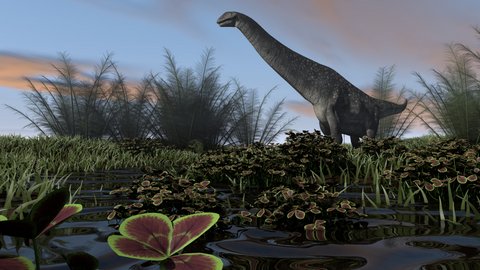
Cretaceous Dinosaurs and South American Habitats
I’ve done the same for Cretaceous dinosaurs.
Table 2 -South American Dinosaurs Cretaceous Period
| Dinosaur and Description | Habitat | Where Fossils Found |
|---|---|---|
| Argentinosaurus - herbivore - titanosaur sauropod | Conifer forests, Mixed forests, Riparian forests, Swamps, Riversides | Argentina |
| Patagotitan - herbivore - titanosaur sauropod | Conifer forests, Mixed forests, Riparian forests, swamps | Argentina |
| Giganotosaurus - carnivore - carcharodontosaur | Conifer forests, Mixed forests, Riparian forests, | Argentina |
| Adamantisaurus - herbivore - titanosaur sauropod | Conifer forests, Mixed forests, Riparian forests, swamps | Brazil |
| Dreadnoughtus - herbivore - titanosaur sauropod | Conifer forests, Mixed forests, Riparian forests, Swamps, Riversides | Argentina |
| Carnotaurus - Carnivore - Abelisaur | Conifer forests, Mixed forests, Riparian forests, | Argentina |
| Irritator - Carnivore - Spinosaur | Semi-aquatic habitat, Riparian forests, Swamps, Riversides | Brazil |
| Dinosaur and Description | Habitat | Where Fossils Found |
Final Thoughts
The more we understand about the habitats of dinosaurs, the better we can understand dinosaur ecosystems. I always think that clues fossils give about dinosaurs also give us clues about how and where they lived.
Nevertheless, given the number of dinosaur species that also lived in South America throughout the Mesozoic Era, we should pay attention to the area over the next few years. Perhaps we will also recover more fossils of many of these rare and little-known species.
Frequently Asked Questions
What is the significance of dinosaur habitats in South America?
Dinosaur habitats in South America provide valuable insights into the ancient landscapes and stomping grounds of these magnificent creatures millions of years ago.
Did dinosaurs live in South America during the Triassic period?
Yes, dinosaurs did live in South America during the Triassic period.
How did dinosaurs migrate from South America to Greenland?
It is believed that dinosaurs migrated from South America to Greenland over many generations, possibly due to changes in climate and the shifting of continents.
What can you tell about the dinosaurs of South America?
The dinosaurs of South America were diverse and unique, with various species inhabiting different habitats across the continent.
Were there any deserts in South America during the age of the dinosaurs?
Yes, there were deserts in South America during the age of the dinosaurs.
Which dinosaurs are known to have inhabited the Late Cretaceous of Brazil?
The Late Cretaceous of Brazil is known to have been inhabited by various dinosaur species, including theropod and sauropod dinosaurs.
Did dinosaurs live during the Late Jurassic period in South America?
Yes, dinosaurs did live during the Late Jurassic period in South America.
What are some examples of theropod dinosaurs found in South America?
Some examples of theropod dinosaurs found in South America include the Carnotaurus and the Velociraptor.
How did dinosaurs adapt to the different habitats in South America?
Dinosaurs in South America adapted to different habitats by developing various physical traits and behaviors suited to their specific environments.
Were there any long-necked dinosaurs from the Late Cretaceous of South America?
Yes, there were long-necked dinosaurs from the Late Cretaceous of South America, such as the Titanosaur dinosaur.
